Pan Am Series – Part XXXVII: The DC-6B
24 May 2014 4 Comments
The Workhorse of the Fleet
During the heyday of Pan American World Airways’ prop-era and well into the jet age, one particular airplane figured prominently in its operations around the world: The Douglas DC-6B “Super Six Clipper”.
According to Ron Davies in Pan Am – An Airline and its Aircraft, Pan American ordered a total of forty-five of the aircraft that were delivered between February 1952 and June 1954. During its deployment in Pan American’s fleet, the Super Six performed just about every duty conceivable. It could be configured in an all-first class service with 44 seats, all tourist from 88 to 109 seats and in a dual configuration with 82 seats.
The Super Six, however, played a very important part in Pan American’s history when Clipper Liberty Bell inaugurated all-tourist Rainbow service on the prestigious New York-London route. This was a significant accomplishment in Pan American’s effort to bring air travel to the mass market.
The all-tourist Rainbow Services in the Atlantic are shown below in a page from the June 1954 timetable. In the same timetable Super Sixes were also operating on the round the world routes, the Africa service as well as in Latin America. “Sleeperette” seats (fully reclining with leg rests) were also available in some aircraft.
By 1956, the Super Sixes were operating extensively on all of Pan Americans world-wide routes with the aircraft in various configurations, including dual first and tourist class service in the Atlantic, Pacific and round-the-world services, all-first class in the Alaska operation and all-tourist (with all-first on some routes) in Latin America. In 1959, the Super Sixes were seen in the Atlantic, Pacific and Latin America. DC-7C’s replaced the “Sixes” on the Africa route, and in the New York-San Juan route, the aircraft was offered in a high density Clipper “Thrift” service with 106 seats. Examples of these services are illustrated in pages in the April 1956 and April 1959 timetables.
Atlantic and Pacific services from the April 1956 timetable (below).
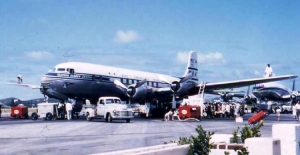
The Super Six was also the mainstay of Pan American’s Latin America operations, serving Central America, South America and the Caribbean, offering all-first class, dual-service and all tourist.

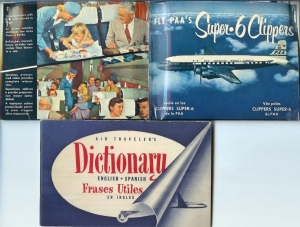
Atlantic and Latin America services from the April 1959 timetable (below). Note the San Juan service offerings with the 106-seat configuration for “Clipper Thrift Service” (bottom).
By 1961, the Sixes were no longer on the round-the-world and Pacific service. Most were deployed in the Internal German Service out of Berlin while some remained operating in Latin America and on the Alaska service in an all-first class configuration. By 1966, the Boeing 727 began replacing the Sixes in Berlin. However, the Sixes returned to the Pacific, having been given a new life as rest and recuperation charters for the U.S. military serving in Southeast Asia.
Latin America and Internal German Services(IGS) from the September 1961 timetable (below).
Phasing out the DC-6B service from the IGS in the September 1966 timetable (below).
An all-freighter version of the DC-6B, the DC-6A, was also purchased by Pan American for use in its all-cargo operations. These aircraft operated all over the world and continued operations through 1966 when they were replaced by the DC-7C and jet aircraft.
Retired Pan American captain John Marshall flew the DC-6A while assigned to Pan American’s Internal German Service stationed in Berlin during the early days of his career. He wrote about his experiences in a story “Flying the ‘6’” that appeared in Airways Magazine. Below are excerpts:
“In the early days of my airline career, I cut my teeth at the flight engineer’s station of one of the most venerable airliners of the time, the Douglas DC-6B. My class of newly hired, neophyte would-be airline pilots were assigned to the company’s Internal German Service, stationed in Berlin. We were handed over to the care . . . of the Assistant Chief Flight Engineer. He was a baleful, somber figure. . . a great hulk of a man . . . [who] walked with an ambling, rolling gait as though he were treading the deck of a ship in heavy sea. Out of hearing we called him the Cinnamon Bear, with awe and trepidation at first . . . and then . . . with great respect and affection.
“It was my fate to be assigned the nightly freighter as my perpetual training flight. This was the only flight that was operated by our aging DC-6A freighter, affectionately known as Nineteen Charlie. She was a battle-scarred veteran of milk runs into the Caribbean and Central America, squatting on sun-baked strips carved from bug-infested jungles. She had hopped from island to island carrying coconuts and bananas, and now she was carrying mail into and out of Berlin. * * * Every night except Sunday, the blue and yellow trucks of the German Bundespost would begin to gather at the cargo depot at the far end of the big hanger. . . [and] by 10:30 [p.m.] hundreds of sacks of mail and other assorted cargo would be loaded aboard Nineteen Charlie. She left for Frankfurt at 11 p.m. and you could set your watch by her.
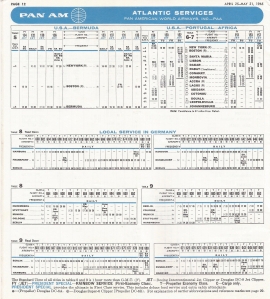
Page from April 1965 timetable showing the Berlin-Frankfurt DC-6A freighter service.
“The flight crew sauntered down leisurely from operations around ten-thirty. Everything on the airport was quiet now, the last flights having arrived from the West by ten. * * * The flight engineer was always the first to arrive and in my case, new at the game and anxious to absorb all the quirks and tricks of the trade, ‘early’ meant at the airplane an hour and a half before departure, with the hulking figure of my instructor never far from my side.
“Precisely at 11 p.m. the four big Pratt & Whitneys were cranked into sputtering life, and we slowly taxied out to the end of the runway. With the exhausts glowing an angry orange-red and the propellers straining to a pulsing song we roared the length of runway 27 Left, lifted off and careening over the railway station, we were off into the night. Upon arrival in Frankfurt the mail flight became part of a carefully orchestrated scenario that turned the Frankfurt Airport into a central mail depot for all of West Germany. Flights from all over the Republic were arriving within minutes of each other, bound for the same rendezvous. Sacks of mail were unloaded, sorted, exchanged and reloaded, and two hours later the same planes dispersed, bound for the cities from whence they came. It was one of the original hub-and-spoke cities.
“During the two-hour layover the pilots took pillows and blankets to the Operations Office and were able to snatch forty winks while the loading was completed, but I did not join them. The DC-6 was a sleek-looking creature from a distance, but up close she was mottled with dozens of orifices — some large, others the size of soda straws. We would be asked the function of each on our final check, and the check engineers were sure we were well drilled. The entire layover was spent walking around the airplane, flashlight in hand, instructor at my side, poking and peering into the nether regions of the airplane. I saw valves, pipes and cables in my sleep for weeks afterward.
“Then it was back aboard for the flight back through the south corridor to Berlin. It was nearly 3 a.m., and the sparkling lights of the East German towns were about half the size they had been earlier. The country slept. Finally the glow of Berlin appeared on the horizon ahead, and soon we could see the blackness of Tempelhof, like a hole on the middle of the city. The tires squeaked onto the runway at 3:30, give or take a few minutes, and the day’s flying was finally done.”
The predecessor of the DC-6B, the DC-6, was in response to the challenge by Lockheed to out-class the DC-4, although reliable and route-proven in World War II, not pressurized and an under-performer against the Constellation. For the DC-6, Douglas stretched the fuselage of the DC-4 and pressurized it. The aircraft was further improved when an all-cargo operator ordered the DC-6A, the freighter version. This type was then produced in a passenger version, the DC-6B, five feet longer than the DC-6 and twelve feet longer than the DC-4.
According to Davies, the aircraft was considered marginally more economical to operate than the Constellation, and from an engineering standpoint easier to put through the system of inspection, maintenance and overhaul checks for both the airframe and engines. Said Davies, “[a]lthough later developments of the Douglas line were to outperform the 6B, this was the aircraft that wise old airline folk would refer to as a thoroughbred”.
For additional information about Pan American World Airways:
To learn more about the history of this pioneering airline, click on the title below for preview of
Pan American World Airways – Images of a Great Airline Second Edition.
This book is available on eBay .
Another excellent book is Pan Am – Personal Tributes to a Global Aviation Pioneer, which was published to commemorate the 90th Anniversary of Pan Am’s founding. It contains more than 80 stories written by former Pan Am employees and international media friends who had personal experience with many of Pan Am’s key events during its history. It is the perfect companion to Pan American World Airways – Images of a Great Airline Second Edition and can be purchased on Amazon.
Preview Pan American World Airways – Aviation History Through the Words of its People, which is available on Amazon.
For further information about the history of Pan American World Airways, visit: Pan Am Historical Foundation

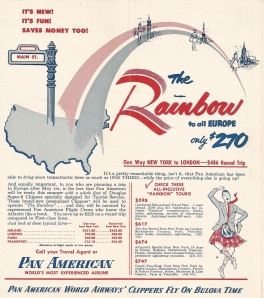

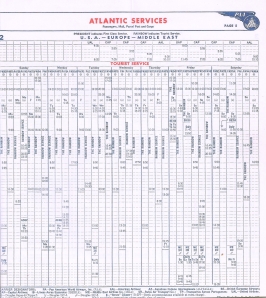
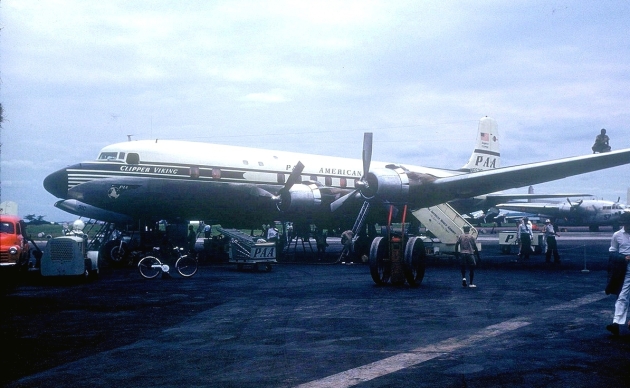
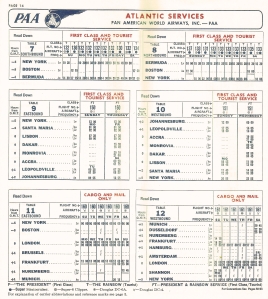
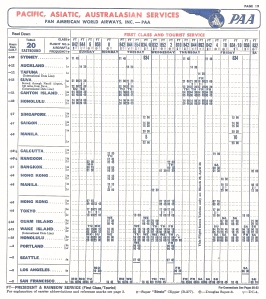
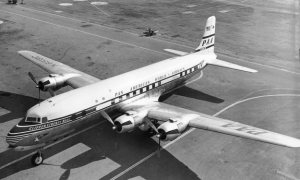
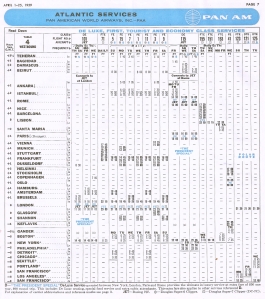
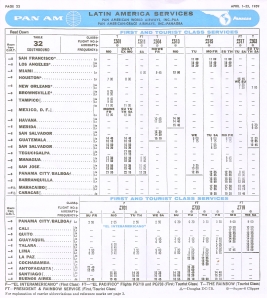
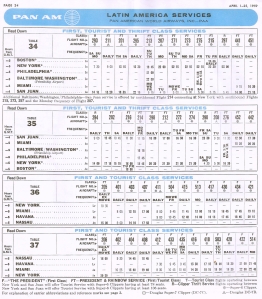
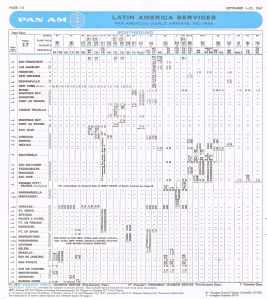
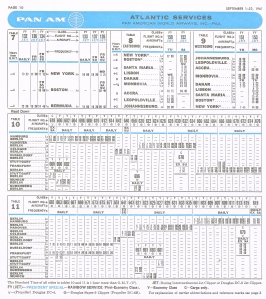
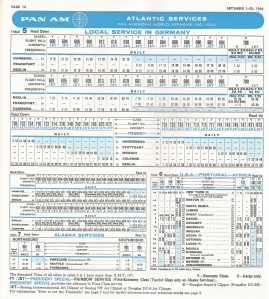
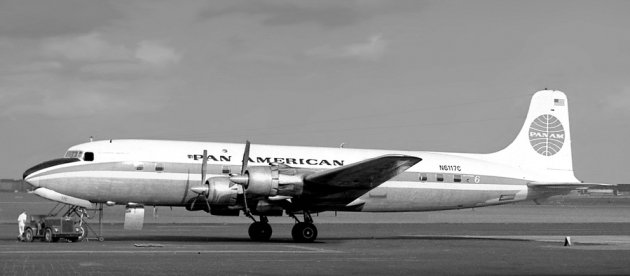
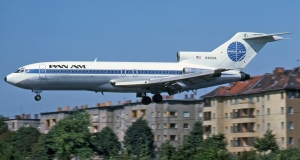
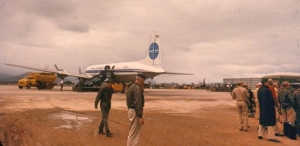
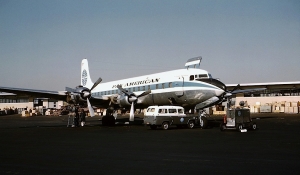
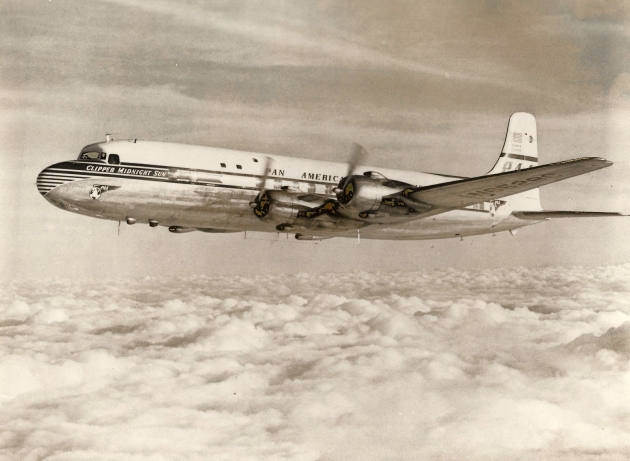
Hi, Jamie;
Great stuff. Suggest you include a passing mention of the DC-7B which came on line in 1955 preceding the DC-7C. Ron Davies wrote that there were seven of them there creatures.
I guess I should advise that the DC-6A or 6B shown with the port side cargo door open on the ground at IDL was my shot that Jon Proctor photoshopped for me.
All the best, my friend, Van
Thanks for the comment, Allan! I am doing the DC-7C next week and will make mention of the -7B. Its use appears often in the timetables of the late 1950s. I’ll fix the picture accreditation. I picked the DC-6A off Jon’s website – IDL pics. Cheers!
Reblogged this on JPB Transportation and commented:
On 26 February 1952, Pan Am took delivery of the DC-6B. Some years later, I was a passenger on this aircraft type, flight 515 from Los Angeles to Guatemala. My first ever airplane trip.
Pingback: Television Firsts Surround the Crowning of Queen Elizabeth II in 1953 - Online Movies Free to Download